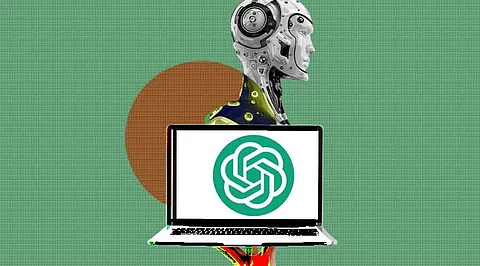

In recent years, the development and integration of chatbots have become progressively prevalent across various industries. These AI-powered conversational agents are designed to interact with users in natural language, offering a wide range of functionalities, from customer support to information retrieval. One of the most progressive and versatile language models, ChatGPT, backed by OpenAI, has gained consideration for its aptitude to generate human-like replies and hold meaningful conversations. Integrating ChatGPT with a bot can significantly enhance the bot's capabilities, enabling it to engage users in more sophisticated and contextually relevant interactions.
ChatGPT, developed by OpenAI, is a variation of the GPT (Generative Pre-trained Transformer) model, renowned for its skill in natural language processing and generation. Trained on vast quantities of text data, ChatGPT excels in understanding and generating human-like text, making it an ideal candidate for enhancing conversational agents. By leveraging its extensive training on diverse language patterns and semantics, ChatGPT can enrich the conversational experience of a bot by producing coherent, contextually appropriate responses.
The integration process begins with accessing the ChatGPT API, which allows developers to connect their bot applications with the model's capabilities. By utilizing the API, developers can send user queries to ChatGPT and receive generated responses, seamlessly incorporating them into the bot's conversational flow.
To ensure that the interactions between the bot and ChatGPT are coherent and contextually relevant, effective context management is crucial. It involves maintaining the conversational history and passing it to ChatGPT to generate responses that align with the ongoing dialogue. By preserving context, the integrated bot can engage users in more meaningful and personalized conversations.
Given ChatGPT's generative nature, it's essential to implement a mechanism for selecting the most suitable response from the model's outputs. It may involve evaluating the relevance, coherence, and appropriateness of the generated text to determine the best response for the bot's interaction with the user.
The integration of ChatGPT with a bot opens up a myriad of use cases across different domains. In customer service, the bot can leverage ChatGPT's language understanding to address complex queries and provide detailed responses. Moreover, in educational applications, the integrated bot can offer personalized tutoring and explanations, drawing from ChatGPT's vast knowledge base. Additionally, in e-commerce settings, the bot can engage users in natural and persuasive conversations, enhancing the overall customer experience.
The integration of ChatGPT with a bot represents a significant advancement in the capabilities of conversational AI. By harnessing the language generation prowess of ChatGPT, developers can create bots that are not only proficient in understanding user inputs but also adept at producing human-like, contextually relevant responses. As AI continues to evolve, the incorporation of advanced language models like ChatGPT will undoubtedly redefine the landscape of conversational agents, paving the way for more intelligent and engaging interactions.
Join our WhatsApp Channel to get the latest news, exclusives and videos on WhatsApp
_____________
Disclaimer: Analytics Insight does not provide financial advice or guidance. Also note that the cryptocurrencies mentioned/listed on the website could potentially be scams, i.e. designed to induce you to invest financial resources that may be lost forever and not be recoverable once investments are made. You are responsible for conducting your own research (DYOR) before making any investments. Read more here.
